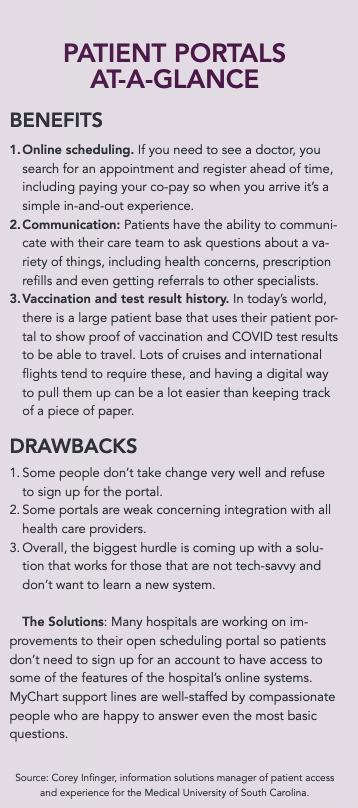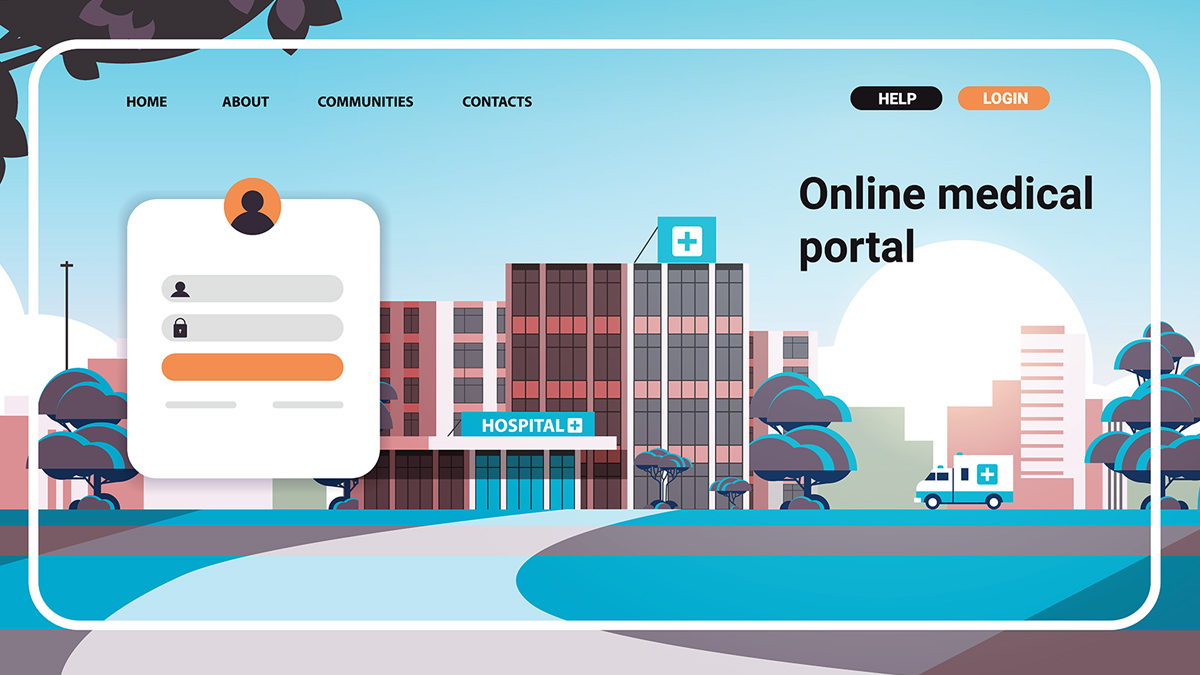Being an active participant in one’s health and well-being has grown in popularity over the last decade and the medical industry has taken notice. The days of patients sitting around on hold trying to schedule an appointment or nervously awaiting lab results are fading as medical practices turn toward cutting-edge technology to put that information quite literally at patients’ fingertips.
Patient portal systems such as MyChart sprang from this desire to streamline communication in a format that enables patients to communicate with their health team, manage scheduling, view lab results, manage medications and much more at any time during the day.
“We started basic access back in 2014 and have expanded from there,” Corey Infinger, information solutions manager of patient access and experience for the Medical University of South Carolina explained. “At that time, we switched from using multiple systems and consolidated to one application called Epic. We use the MyChart functionality as our patient portal, which really helps with the integration of the Epic system to make it easy for us to keep our patients informed of their care while giving them the tools to do so much more.”
Though the benefits are many, challenges crop up as well. Patient portals can be daunting for senior citizens who are worried that technology has surpassed their ability to use it. Even the most tech-savvy patients and their caregivers face challenges with portal systems as the systems evolve.
Suzanne Bruce, 66, a realtor in Charleston, has experienced both benefits and challenges using patient portals at hospitals other than MUSC.
Bruce relied heavily on portals while managing her mother’s care as she battled Alzheimer’s disease. The ability to communicate swiftly with her mother’s physicians was paramount to her role as caretaker.
“Time management can be an issue when you’re a senior yourself and caring for a parent. Being able to communicate through electronic means helped us avoid unnecessary travel or visits to the office,” Bruce said. “If I had a question about her care that didn’t require a face-to-face visit, I could send a message via the portal and someone from her team would get back to me within a day or two.”
That speedy feedback is precisely what Infinger and his team strive for.
Assisting senior citizens who are reluctant to fire up a computer and learn something new is another favorite niche for Infinger and his team.
Shirley Ogle, 71, of Smoaks, South Carolina, and her husband, Frank, moved to the Lowcountry 20 years ago to open a bed and breakfast. While being in the country has its perks, one of the challenges is the distance between their small-town home and big city health care.
The availability of patient portals has come as a relief to Ogle. Historically, she has been deeply involved in her own health care, right down to asking what brand of materials were to be used in her knee replacement surgery.
Always vigilant, Ogle enjoys the participatory aspect of the portals. Seeing her lab work and comparing trends across her visits gives her a sense of control.
“I’m able to get the most out of my oncologist. I used to have to request a printed report after every visit and go pick it up,” Ogle said. “With the portal, I no longer bother an administrative person to make copies for me. When lab reports are ready, I can just look down at my phone and see the results.”
Ogle’s husband is a triple-degreed engineer, and, while he is technically savvy, he has no patience for even the speediest of portals.
“He’s in perpetual motion. Getting him to stand still to engage with an app or portal is next to impossible,” Ogle said, so the duty falls to her. “Even if he and I have appointments in different places on the same day, I log into his account or have his check-in link sent to me and voila! I check in for him while I’m in the waiting room for my own appointment.”
Bruce admitted that she understands from a corporate and IT perspective that delivering her “fully-loaded dream portal” might pose a challenge, but, as both she and Ogle have experienced, the development of patient portals is ever evolving. … and improving.
“When I first started using it, the interface was kind of cumbersome,” Ogle stated. “But the second iteration of the portal ran much more smoothly. I’m glad they moved away from tedious interfaces, because we, as seniors, value our time. I want the information quickly so I can get on with my life. I don’t want to have to go through three or four things to get to my information every single time I log in,” she mused.
“I feel like they’re headed in the right direction, and I hope they evolve to the point where they’re able to provide a truly seamless experience, but I feel we still have a way to go,” Bruce said.
For example, though she stays within the same health care provider system, her records aren’t always linked.
“I had a visit to the ER that revealed a potentially dangerous condition. That doesn’t show up in my provider’s portal, though they operate under the same umbrella,” Bruce said.
“It’s frustrating because I’d like that information to be accessible, in its entirety, in one place. If my care was spread out over various hospital groups, I could understand, but the portal would be more meaningful and more usable to me if it gave me access to everything – including paying bills – but that’s another discussion,” Bruce sighed.
By Amy Gesell

